本期要闻 Highlights of the Month
State Council: Notice on Issuing the Action Plan for New Pollutant Control
有毒有害化学物质的生产和使用是新污染物的主要来源,新污染物具有生物毒性、环境持久性、生物累积性等特征。目前,国内外广泛关注的新污染物主要包括国际公约管控的持久性有机污染物、内分泌干扰物、抗生素等。国务院近日印发《新污染物治理行动方案》,就是为了补齐新污染物治理工作短板,加强化学物质全生命周期环境风险管控,防范新污染物环境与健康风险。
行动方案明确到2025年,完成高关注、高产(用)量的化学物质环境风险筛查,完成一批化学物质环境风险评估;动态发布重点管控新污染物清单;对重点管控新污染物实施禁止、限制、限排等环境风险管控措施;有毒有害化学物质环境风险管理法规制度体系和管理机制逐步建立健全,新污染物治理能力明显增强。为了达到目标,行动方案将从以下四个方面进行治理任务:
一是开展调查监测,评估新污染物环境风险状况。动态发布重点管控新污染物清单及其禁止、限制、限排等环境风险管控措施。2022年将发布首批重点管控新污染物清单。
二是严格源头管控,加强产品中重点管控新污染物含量控制,在重要消费品环境标志认证中,对重点管控新污染物进行标识或提示。
三是强化过程控制,减少新污染物排放。
四是深化末端治理,降低新污染物环境风险。
The production and use of toxic and harmful chemical substances are the main sources of new pollutants. New pollutants have the characteristics of biological toxicity, environmental persistence, and bio-accumulation. Currently, new pollutants that are widely concerned include persistent organic pollutants regulated and controlled by international conventions, endocrine disruptors, and antibiotics. The State Council recently issued the Action Plan for New Pollutant Control, to address the weakness in the control of new pollutant, and strengthen the management and control of environmental risks in the life cycle of chemical substances, and prevent the environmental and health risks of new pollutants.
The Action Plan specifies that by 2025, the environmental risk screening of chemical substances of high concern and high production (consumption) will be completed; the environmental risk assessment of a batch of chemical substances will be conducted, with dynamic update of key new pollutants list; the key new pollutants will be either prohibited, restricted to use or restricted to discharge. Legislation system and management mechanism for environmental risk management of toxic and harmful chemical substances will be in place and improved, with enhanced capability to control new pollutants. To achieve the goals, the action plan proposes the tasks inthe following four areas:
1. Carry out investigation and monitoring to assess the environmental risk status of new pollutants, dynamically release a list of new pollutants subject to key management and propose risk control measures such as prohibition, use restriction, and emission restriction. The first key new pollutant list will be released in 2022.
2.Apply strict source control, strengthen the content limit control of key new pollutants in products, and label or tip the containment of key new pollutants in product through the environmental label certification of important consumer goods.
3. Strengthen process control and reduce the discharge of new pollutants.
4.Deepen the end-pipe treatment to reduce the environmental risk of new pollutants
最新国家法律法规 New Regulations
State Administration for Market Regulation: Measures for the Safety Supervision and Inspection of Special Equipment
办法适用于市场监督管理部门对特种设备生产(包括设计、制造、安装、改造、修理)、经营、使用(含充装)单位和检验、检测机构实施监督检查。
特种设备安全监督检查分为常规监督检查、专项监督检查、证后监督检查和其他监督检查。常规监督检查对象包括取得许可资格且住所地在本辖区的全部特种设备生产单位和本辖区办理特种设备使用登记的使用单位。
The Measures is applicable to the market supervision and management departments to conduct supervision and inspection of entities engaging in special equipment production (including design, manufacture, installation, transformation and repair), trading, use (including filling) , as well as organizations that perform inspection and testing activities..
The safety supervision and inspection of special equipment comprise of routine supervision and inspection, special supervision and inspection, post-certification supervision and inspection and other supervision and inspection. The routine supervision and inspection focus on the special equipment production units and the special equipment users that have obtained the license in the jurisdiction.
Standing Committee of the National People’s Congress: Wetlands Conservation Law of the People’s Republic of China
《中华人民共和国湿地保护法》自2022年6月1日起施行。《保护法》规定,建设项目选址、选线应当避让湿地,无法避让的应当尽量减少占用,并采取必要措施减轻对湿地生态功能的不利影响。国家建立湿地生态保护补偿制度。因生态保护等公共利益需要,造成湿地所有者或者使用者合法权益受到损害的,县级以上人民政府应当给予补偿。
Wetlands Conservation Law of the People’s Republic of China comes into force on June 1, 2022. According to the Law, the site selection and route selection of construction projects should avoid the wetlands. If it is not avoidable, the occupation of wetlands by the projects should be minimized, and necessary measures should be taken to reduce the adverse impact on the ecological functions of wetlands. The state establishes a compensation system for wetland ecological protection. If the legitimate rights and interests of wetland owners or users are damaged due to the needs of ecological protection and other public interests, the people’s governments at or above the county level shall make compensation for those who have been impacted.
National Development and Reform Commission: “14th Five-Year Plan for Renewable Energy Development”
2022年6月1日,国家发改委、国家能源局等九部门联合印发《“十四五”可再生能源发展规划》,明确到2025年,可再生能源年发电量达到3.3万亿千瓦时左右,消费总量达到10亿吨标准煤左右,占一次能源消费18%左右。“十四五”时期,可再生能源发电量增量在全社会用电量增量中的占比超过50%,风电和太阳能发电量实现翻倍。太阳能热利用、地热能供暖、生物质供热、生物质燃料等非电利用规模达到6000万吨标准煤以上。
On June 1, 2022, the National Development and Reform Commission, the National Energy Administration and other nine departments jointly issued the “14th Five-Year Plan for Renewable Energy Development”. The Plan clearly states that by 2025, the annual power generation of renewable energy will reach about 3.3 trillion KWh, equivalent to the consumption of 1 billion tons of standard coal, which will take about 18% of primary energy consumption. During the “14th Five-Year Plan” period, the increase in renewable energy power generation accounted for more than 50% of the increase in electricity consumption in the whole society, and the amount of wind power and solar power generation will double. The scale of non-electricity utilization such as solar thermal utilization, geothermal energy heating, biomass heating, and biomass fuels will reach more than 60 million tons of standard coal.
最新国家标准New National Standards
HJ 1253-2022 Self-Monitoring Technology Guidelines for Pollution Sources—Electronics Industry
HJ 1255-2022 Self-Monitoring Technology Guidelines for Pollution Sources—Ceramics Industry
HJ 1256-2022排污单位自行监测技术指南 中药、生物药品制品、化学药品制剂制造业
HJ 1256-2022 Self-Monitoring Technology Guidelines for Pollution Sources —Pharmaceutical Industry Chinese Traditional Medicine Category, Biological Pharmaceutical Products Category, Chemical Pharmaceutics Preparations Category
HJ 1246-2022 Self-Monitoring Technology Guidelines for Pollution Sources —Printing Industry
立法草案 Policy Initiatives & Developments
Emergency Management Department: General Rules for Designing the Production Facilities in Accordance With Safety Guard Requirements (Consultation Paper)
本文件将代替 GB 5083—1999生产设备安全卫生设计总则,本次修订始于2010年,历经数稿,目前版本的主要变化如下:
名称改为《生产设备安全防护设计总则》,删除了原标准中职业卫生的相关内容,但保留了急性中毒相关内容;增加了智能化、远程控制等相关内容;增加了基于风险评估的生产设备故障失效分析的内容。
《生产设备安全防护设计总则》规定了各类生产设备安全防护设计的基本原则、一般要求和特殊要求。适用于除航空航天器、海上设施和船舶、电气设备以及核设施之外的各类生产设备。是各类生产设备安全防护设计的基础标准。
This document will replace GB 5083-1999 “General Rules for Designing the Production Facilities in Accordance With Safety and Health Requirements”. The revision was initiated in 2010 and has gone through several drafts. The main changes in the current version are as follows:
The name of the document has changed to “General Rules for Designing the Production Facilities in Accordance With Safety Guard Requirements”, and removed the relevant contents on occupational health ; added AI and remote control requirements; Also, the contents of failure analysis of production equipment based on risk assessment are added.
The draft standard specifies the basic principles, general requirements and special requirements for safe guard devices design. It is applicable to all kinds of production equipment except for aerospace, offshore facilities and ships, electrical equipment and nuclear facilities. It is the basic standard for safety guard design of various production equipment.
最新地方性法规 Regional Updates
Regulations of Guangxi Zhuang Autonomous Region on the Prevention and Control of Environmental Pollution by Solid Wastes
条例要求广西企业事业单位和其他生产经营者产生、收集、贮存、运输、利用、处置固体废物的,应按规定通过自治区固体废物信息管理系统定期上报固体废物的种类、产生量、流向、贮存、利用、处置等有关资料,并依法及时公开固体废物污染环境防治信息,主动接受社会监督。
条例明确要求产生危险废物的单位应建立危险废物管理台账,如实记录危险废物的种类、产生量、流向、贮存、处置等信息。产生危险废物的单位贮存具有易燃性或者反应性的危险废物,贮存期限不得超过一年。
The Regulations requires any enterprises, institutions and other producers and operators that generate, collect, store, transport, utilize, and dispose solid waste to regularly report the type, amount, destination, storage, utilization, disposal and other relevant data of solid waste through the autonomous region’s solid waste information management system, and timely disclose the relevant information.
The regulations also requires that units generating hazardous waste shall establish a hazardous waste management recordkeeping on type, amount, flow direction, storage, disposal and other information of hazardous waste. Any aazardous waste generator that store flammable or reactive hazardous waste, the storage period shall not exceed one year.
山东省:山东省钢铁行业建设项目温室气体排放环境影响评价技术指南(试行)和山东省化工行业建设项目温室气体排放环境影响评价技术指南(试行)
Shandong Province: Technical Guidelines for Environmental Impact Assessment of Greenhouse Gas Emissions for Construction Projects of Steel Industry in Shandong Province (Trial) And Technical Guidelines for Environmental Impact Assessment of Greenhouse Gas Emissions for Construction Projects of Chemical Industry in Shandong Province (Trial)
山东省出台二个环境影响评价技术指南(试行)是为了落实将建设项目温室气体排放纳入环境影响评价的试点工作,指南针对需编制环评报告书的钢铁行业建设项目(行业类别为《国民经济行业分类》中的“3110炼铁”“3120炼钢”“3130钢压延加工”);以及溴素、甲醛、氰尿酸等化工行业。
Shandong Province issued two technical guidelines for environmental impact assessment (Trial) to implement the pilot work of incorporating greenhouse gas emission assessment of into environmental impact assessment for construction projects. The Guidelines apply to the construction projects that are required to compile the EIA report in iron and steel industry (the industry categories are “3110 iron making”, “3120 steel making” and “3130 steel rolling processing” in the industrial classification of national economy); and in chemical industries, such as bromine, formaldehyde, cyanuric acid and others.
本法规月刊是由伊尔姆环境资源管理咨询(上海)有限公司(ERM)、Nimonik 安纬同(上海)管理咨询有限公司(Nimonik)与大成律师事务所上海分所(Dentons Shanghai)联合制作。我们在确保其内容准确无误的同时,不对其任何可能的错误或疏忽承担责任。本刊中的内容不可作为法律依据,亦不可视为对个案的释义。因参考本刊物内容导致的任何损失,ERM, Nimonik 与大成律师事务所将不承担任何责任。如需寻求专业意见,请咨询有关专业顾问。
This newsletter is prepared for clients and professional associates by ERM, Nimonik and Dentons Shanghai. Whilst every effort has been made to ensure accuracy, no responsibility can be accepted for errors and omissions, however caused. The information contained in this newsletter should not be relied on as legal advice and should not be regarded as a substitute for detailed advice in individual cases. No responsibility for any loss occasioned to any person acting or refraining from action as a result of material in this newsletter is accepted by ERM, Nimonik or Dentons Shanghai. If advice concerning individual problems or other expert assistance is required, the services of a competent professional adviser should be sought.






 沪公网安备31010602007801
沪公网安备31010602007801